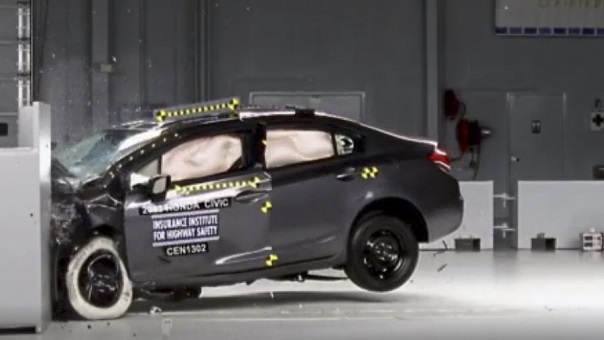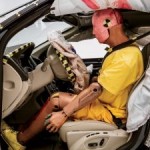
By Dave Bean, FMW Associate Editor
March 8, 2023
According to a new Insurance Institute for Highway Safety (IIHS) study, operating a vehicle that does well in its driver-side small overlap front crash test decreases your chance of becoming a road fatality statistic.
A driver behind the wheel of a poorly rated vehicle is 12 percent more likely to die in a front end collision than a driver whose vehicle rated ‘good’.
“The numbers confirm that strong performance in the Institute’s small overlap front crash test translates into big reductions in fatality risk,” said Eric Teoh, director of statistical services at IIHS and one of the study’s authors.
In 2012, the IIHS sought to improve its series of crash assessments and instituted the driver-side small overlap front crash test. Previously, they were using a moderate overlap test, but found that nearly all vehicles tested utilizing this criterion earned a good rating. The IIHS needed to fine tune the test since small overlap collisions were responsible for about one-quarter of front-end crash deaths or critical injuries to drivers.
Both a driver-side and passenger-side small overlap test duplicate what occurs when either front vehicle corner runs into another car or common roadside object like a telephone pole or a tree. Teoh’s study included just the driver-side test since every vehicle in a road accident has a driver (at least for now), but not necessarily a passenger.
 With a standard-sized crash dummy behind the wheel, the test vehicle is hurled at 40 mph into a stationary barricade. After judging how much damage penetrated the cockpit, a prediction can be made as to how much injury would have occurred had the dummy been a human. Also evaluated is the effectiveness of seat belts in keeping the dummy restrained during impact.
With a standard-sized crash dummy behind the wheel, the test vehicle is hurled at 40 mph into a stationary barricade. After judging how much damage penetrated the cockpit, a prediction can be made as to how much injury would have occurred had the dummy been a human. Also evaluated is the effectiveness of seat belts in keeping the dummy restrained during impact.
When the test was introduced, only one-in-ten vehicles earned a ‘good’ rating and four-in-ten were rated poor. Now, nearly all vehicles who participate earn a ‘good’ rating in both driver and passenger side tests.
To demonstrate how that improvement in ratings is influencing real-world crash results, the IIHS utilized its own software which decodes VIN numbers, keying on vehicles involved in front-end collisions from 2012 through 2020. They then cross-analyzed that data with data from the driver-side small overlap front crash ratings. And this is where they determined that someone behind the wheel of a vehicle rated as ‘good’ is 12 percent less likely to die in a front-end road accident than a driver of a vehicle rated as ‘poor’.
To view IIHS vehicle crash test ratings, click here.




